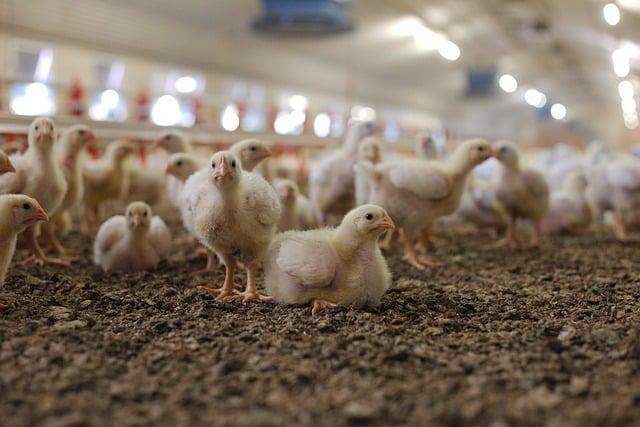As Sarah watched her golden retriever, Max, eagerly devour his homemade chicken and vegetable mix, she couldn’t help but wonder: should she mix it with kibble? One day, she decided to experiment. The next meal, she combined the two. To her delight, Max not only loved the new blend but also thrived with improved energy and a shiny coat. Mixing homemade food with kibble can provide a balanced diet, ensuring your dog gets essential nutrients while enjoying the flavors they crave. Why not give your furry friend the best of both worlds?
Contents
- Evaluating the Nutritional Balance of Homemade Dog Food and Kibble
- Understanding the Benefits of Combining Homemade and Commercial Diets
- Addressing Potential Risks and Considerations in Mixing Dog Food
- Practical Tips for Safely Integrating Homemade Food with Kibble
- Q&A
Evaluating the Nutritional Balance of Homemade Dog Food and Kibble
When considering the nutritional balance of homemade dog food versus kibble, it’s essential to recognize that both options have their merits and potential drawbacks. Homemade dog food allows for complete control over ingredients, enabling pet owners to tailor meals to their dog’s specific dietary needs. This can be particularly beneficial for dogs with allergies or sensitivities. However, crafting a nutritionally complete homemade diet requires a solid understanding of canine nutrition, as deficiencies in essential nutrients can lead to health issues over time.
Kibble, on the other hand, is formulated to meet the nutritional standards set by veterinary professionals. Most commercial dog foods undergo rigorous testing to ensure they provide a balanced diet, containing the right proportions of proteins, fats, carbohydrates, vitamins, and minerals. This convenience can be appealing for busy pet owners who may not have the time or resources to prepare homemade meals regularly. However, not all kibble is created equal; some brands may contain fillers, artificial preservatives, and low-quality ingredients that could compromise your dog’s health.
Mixing homemade food with kibble can offer a balanced approach, combining the benefits of both worlds. By incorporating fresh ingredients into your dog’s diet, you can enhance the flavor and nutritional value of their meals. Consider adding **lean meats**, **vegetables**, and **healthy fats** to kibble to create a more wholesome dining experience. This method can also help transition your dog to a homemade diet gradually, allowing their digestive system to adjust while still receiving the essential nutrients found in commercial dog food.
Ultimately, the key to a successful feeding strategy lies in understanding your dog’s unique nutritional requirements. Consulting with a veterinarian or a pet nutritionist can provide valuable insights into creating a balanced diet that meets your dog’s needs. Whether you choose to mix homemade food with kibble or stick to one option, ensuring that your dog receives a well-rounded diet is crucial for their overall health and well-being. Remember, a happy and healthy dog is a well-fed dog!
Understanding the Benefits of Combining Homemade and Commercial Diets
Combining homemade dog food with commercial kibble can offer a range of advantages that cater to your pet’s nutritional needs while enhancing their overall health. One of the primary benefits is the ability to customize your dog’s diet. By incorporating homemade meals, you can select high-quality ingredients that align with your dog’s specific dietary requirements, such as allergies or sensitivities. This tailored approach ensures that your furry friend receives the right balance of nutrients, promoting optimal health and vitality.
Another significant advantage is the potential for improved palatability. Many dogs can be picky eaters, and mixing homemade food with kibble can make mealtime more enticing. The addition of fresh ingredients, such as lean meats, vegetables, and healthy fats, can enhance the flavor and aroma of their meals, encouraging even the fussiest eaters to enjoy their food. This not only helps maintain a healthy appetite but also contributes to a more enjoyable feeding experience.
Moreover, blending homemade and commercial diets can provide a more comprehensive nutrient profile. While high-quality kibble is formulated to meet the nutritional standards set by veterinary organizations, it may lack certain fresh nutrients found in homemade meals. By combining the two, you can ensure that your dog receives a wider array of vitamins, minerals, and antioxidants, which are crucial for their immune system and overall well-being. This synergistic effect can lead to better digestion, increased energy levels, and a shinier coat.
Lastly, this combination can be a cost-effective solution for pet owners. While premium commercial dog food can be expensive, preparing homemade meals allows you to control costs while still providing high-quality nutrition. By strategically mixing kibble with homemade options, you can stretch your budget without compromising on your dog’s health. This approach not only supports your pet’s dietary needs but also offers peace of mind knowing that you are providing them with the best possible care.
Addressing Potential Risks and Considerations in Mixing Dog Food
When considering the combination of homemade dog food and kibble, it is essential to be aware of potential risks that could arise. One of the primary concerns is the **nutritional balance**. Homemade recipes may lack certain essential nutrients that commercial kibble is designed to provide. If the homemade food is not formulated correctly, it could lead to deficiencies or excesses that may harm your dog’s health over time.
Another factor to consider is the **digestive compatibility** of the two food types. Dogs have sensitive digestive systems, and mixing different food sources can sometimes lead to gastrointestinal upset. Symptoms such as vomiting, diarrhea, or gas may occur if your dog’s stomach struggles to process the combination. It’s crucial to monitor your dog’s reaction when introducing new foods and adjust accordingly.
Additionally, the **quality of ingredients** used in homemade meals can vary significantly. While some pet owners may use fresh, high-quality ingredients, others might not have the same standards. This inconsistency can affect the overall health benefits of the diet. Always ensure that the ingredients you choose are safe and nutritious for your dog, avoiding harmful foods such as onions, garlic, or chocolate.
Lastly, consider the **potential for overfeeding**. Mixing homemade food with kibble can lead to an unintentional increase in caloric intake, especially if portion sizes are not carefully managed. This can result in weight gain and associated health issues, such as obesity or diabetes. It’s vital to calculate the appropriate serving sizes for each type of food and consult with a veterinarian to create a balanced feeding plan tailored to your dog’s specific needs.
Practical Tips for Safely Integrating Homemade Food with Kibble
When considering the integration of homemade food with kibble, it’s essential to approach the process with care to ensure your dog’s health and well-being. Start by introducing homemade meals gradually. Mixing a small portion of homemade food with kibble can help your dog adjust to the new flavors and textures without causing digestive upset. Aim for a ratio of about 25% homemade food to 75% kibble initially, and monitor your dog’s response over a week.
**Choose nutritious ingredients** for your homemade meals. Focus on high-quality proteins, healthy fats, and a variety of vegetables. Ingredients such as lean meats, fish, eggs, and certain grains can provide essential nutrients that complement the kibble. Avoid using ingredients that are toxic to dogs, such as onions, garlic, and chocolate. Always consult with your veterinarian to ensure that the homemade food meets your dog’s dietary needs.
**Maintain consistency in your dog’s diet**. Dogs thrive on routine, so it’s crucial to keep the kibble brand consistent while you experiment with homemade additions. This consistency helps prevent gastrointestinal issues and ensures that your dog receives a balanced diet. If you decide to switch kibble brands, do so gradually over several days to minimize any potential digestive disturbances.
**Monitor your dog’s health and behavior** closely during this transition. Keep an eye on their weight, energy levels, and overall demeanor. If you notice any adverse reactions, such as vomiting, diarrhea, or changes in appetite, it may be necessary to adjust the proportions or ingredients in the homemade food. Regular check-ups with your veterinarian can also help you assess whether the combined diet is meeting your dog’s nutritional requirements effectively.
Q&A
-
Is it safe to mix homemade dog food with kibble?
Yes, it is generally safe to mix homemade dog food with kibble, provided that both are nutritionally balanced. This combination can offer a variety of textures and flavors that your dog may enjoy, while also ensuring they receive a well-rounded diet.
-
Will mixing homemade food with kibble improve my dog’s nutrition?
Mixing homemade food with kibble can enhance your dog’s nutrition by adding fresh ingredients rich in vitamins and minerals. However, it’s crucial to ensure that the homemade portion complements the kibble and meets your dog’s dietary needs.
-
How should I transition my dog to a mixed diet?
To transition your dog to a mixed diet, start by gradually introducing the homemade food over a week. Begin with a small amount mixed with kibble, slowly increasing the homemade portion while monitoring your dog’s response to the new diet.
-
Can mixing homemade food with kibble cause digestive issues?
Mixing homemade food with kibble can lead to digestive issues if done too quickly or if the foods are not compatible. Always introduce new foods gradually and consult your veterinarian if you notice any signs of digestive upset.
blending homemade dog food with kibble can offer a balanced diet, enhancing your pet’s nutrition and satisfaction. Consult your veterinarian to tailor the perfect mix for your furry friend, ensuring their health and happiness thrive together.




